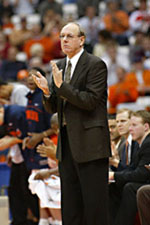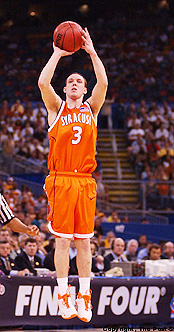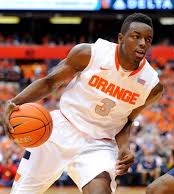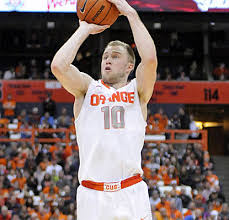I think sometimes we as fans let our preconceptions of what a player or coach does cloud the reality of what we see. There is a common perception among Orange fans that
Jim Boeheim always plays a tight rotation of 7 players, and he is unwilling to change.
Statistically, that is not true. And surprisingly, we only have to go back two and three seasons to see contrary situations.
Using a guideline of players who played 10+ minutes a game, and who played in virtually all of the games they were eligible to play in (where they were not limited by injury of suspension), here is a breakdown from 1989-1990 to 2013-2014 of the number of players in Boeheim's 'rotation' (data from
OrangeHoops)
2013-2014: 7
2012-2013: 9
2011-2012: 9
2010-2011: 8
2009-2010: 7
2008-2009: 8
2007-2008: 7
2006-2007: 7
2005-2006: 7
2004-2005: 8
2003-2004: 9
2002-2003: 8
2001-2002: 8
2000-2001: 7
1999-2000: 8
1998-1999: 8
1997-1998: 7
1996-1997: 7
1995-1996: 7
1994-1995: 8
1993-1994: 7
1992-1993: 8
1991-1992: 7
1990-1991: 7
1989-1990: 7

Over those 25 seasons, Boeheim did employ a seven man rotation thirteen times. But, that means twelve times he employed a larger rotation. Nine times he had an eight man rotation, and three times he had a nine man rotation. In 2012-2013 and 2011-2012 he had the nine man rotations... very recent indeed!
I do no think there is any doubt that Boeheim likes to play his primary five as much as he can. And clearly a seven or eight man rotation is his norm. He does however adjust to the talent he has.
Boeheim appears to be unwilling to play a player who has not proven himself in practice. He does not appear to be a coach who wants to play a guy 'just to give him experience'. Instead, he always works to put his team in the best position to win for that game.
It is true that Boeheim's bench will shrink during truly big games. I would submit however, that is true for most if not all coaches. You play your best players when you need to play your best players.
In 1995-1996 Syracuse played a tight bench all season, and Kentucky, who was the dominant favorite that season was touted for the incredible depth of the team and how masterful Rick Pitino was for playing so deep into his bench. And Kentucky
did play 10 deep all season long; no player on that team averaged more than 27 minutes a game.
In the championship game, Syracuse played seven deep as they had done all year. But look at what
Rick Pitino did. Pitino, who is a great coach, went only eight players deep, and four of his starters played 27 or more minutes. Tony Delk played 37 minutes and Anthony Epps 34.
Part of that was because it was a real big game for Kentucky, and Pitino wanted his best players on the court (i.e. just like Boeheim). And part of that was that the game pace and tempo, which was dictated by Syracuse, not Kentucky, allowed Pitino the opportunity to keep his starters in the game longer. However, read that last point again. Pitino, in one game because of tempo, kept his starters in longer. Boeheim plays with that tempo all 35+ games all year. And by the way, which set of players do you think were less fatigued in that game? The guys who averaged 35-38 minutes a game all year, or the guys who averaged 22-27 minutes a game? My money is on the guys who are used to playing those minutes.
But I digress.
The original point was that Boeheim never plays more than seven deep (which is false), and Boeheim won't change or adapt (which is also false). When Boeheim has the talent, he plays the talent, and when he has a small set of talented players, the rotation is smaller.
An interesting side note: back in 1977-1978, during the Louie 'n Bouie era, Syracuse went 11 players deep (10 if you don't want to count Marty Headd as a regular), and 12 players on the team had enough quality time per game they played to average 3.4 ppg or more.








